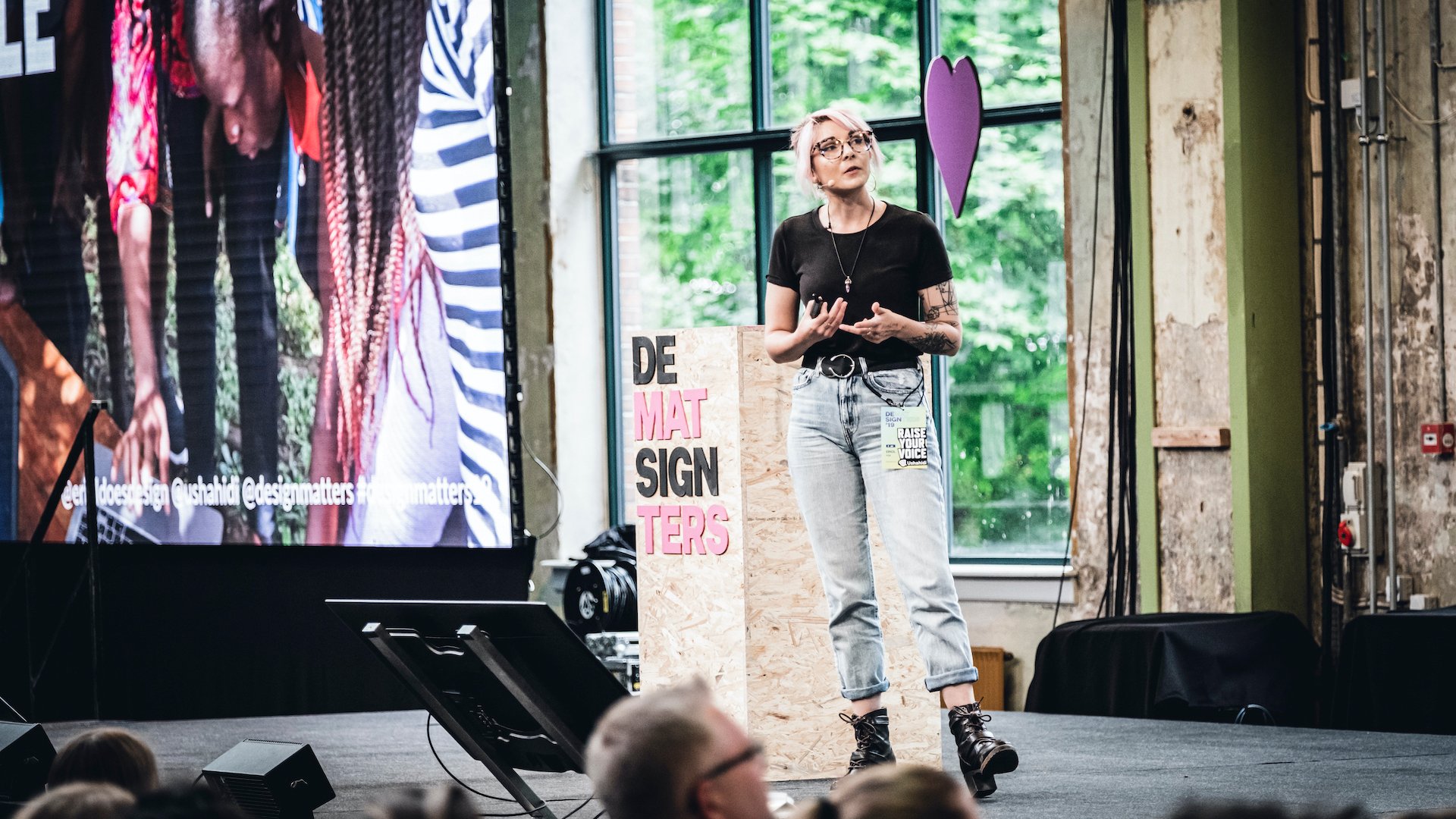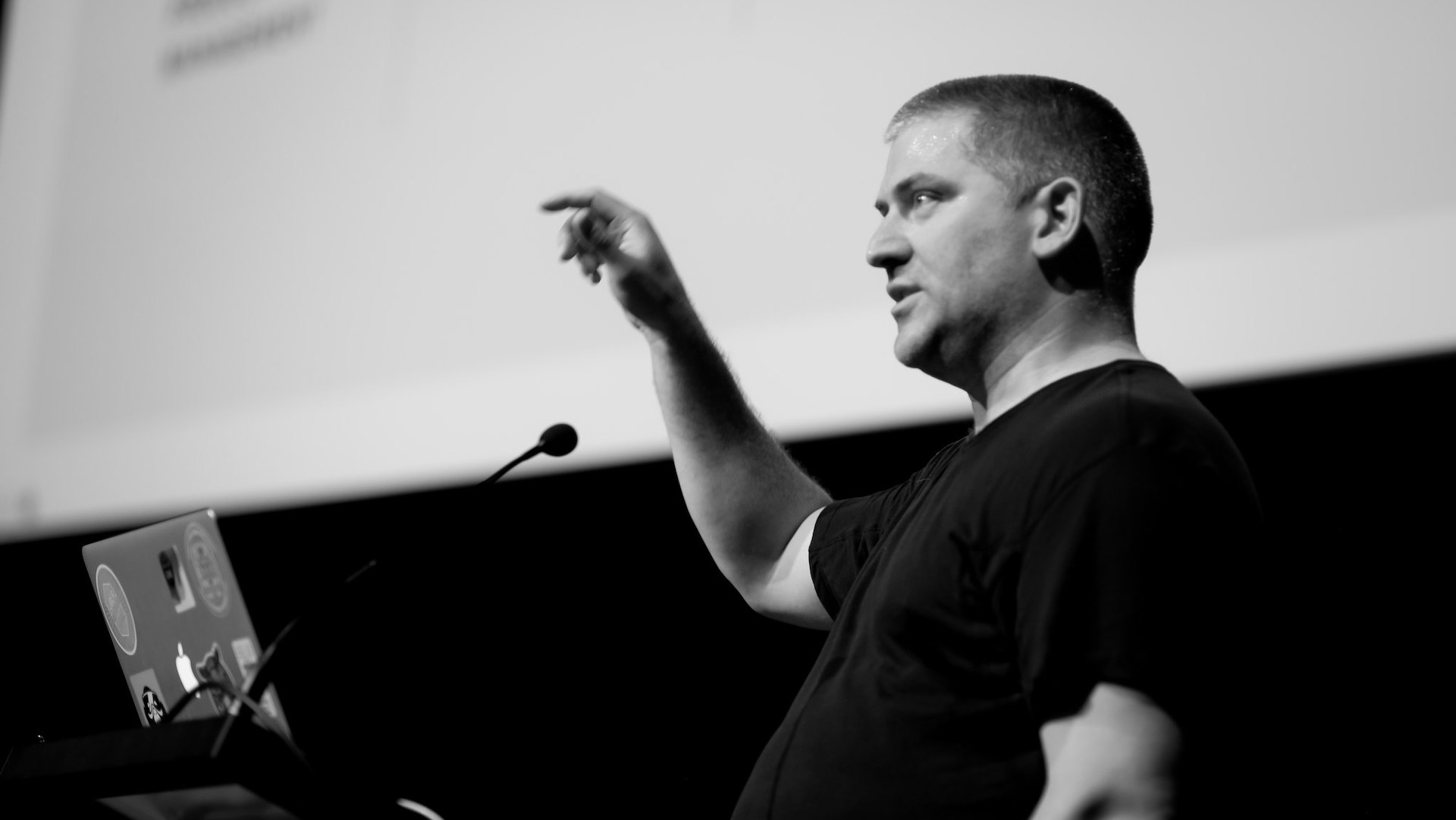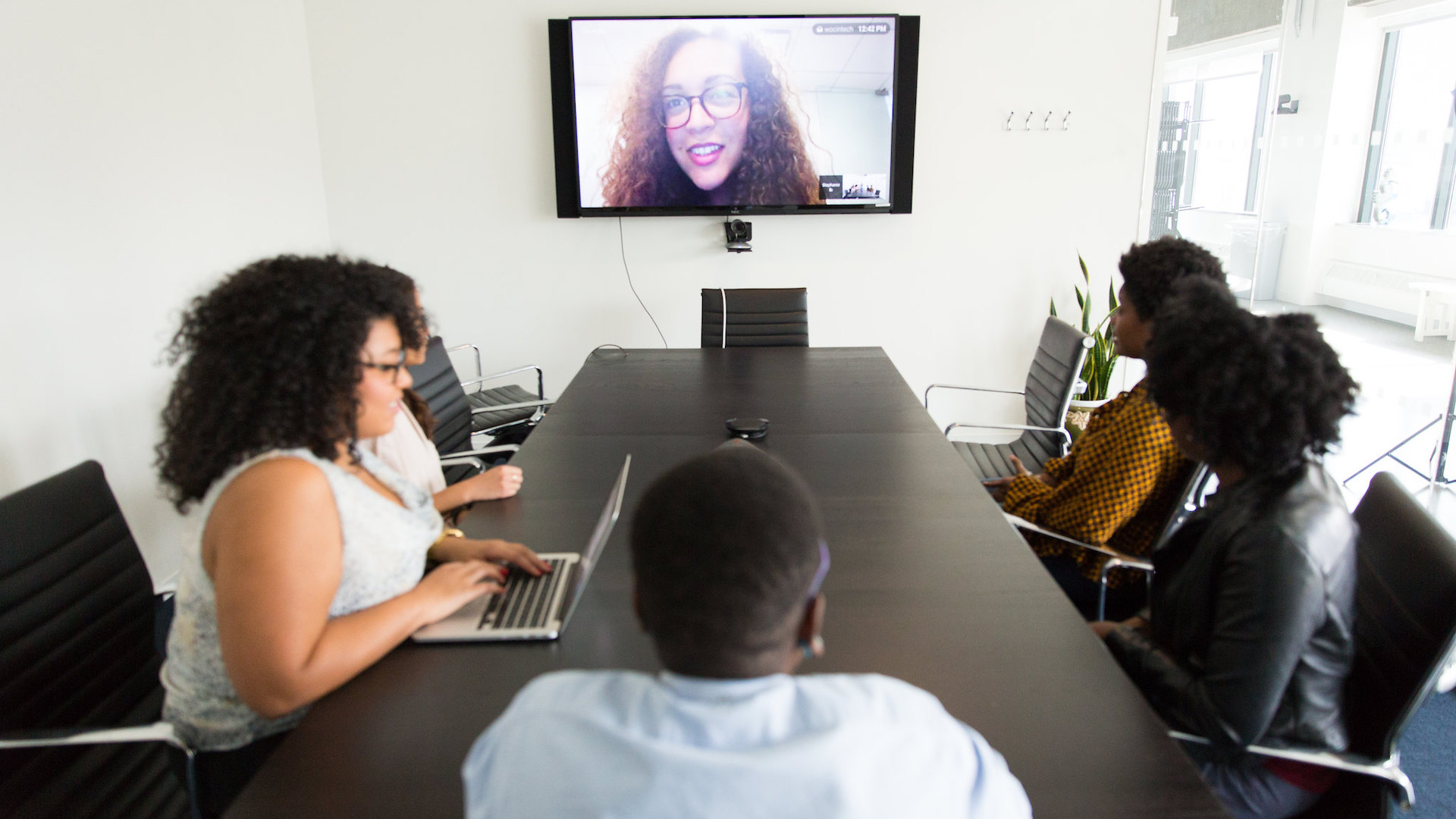Before the pandemic, user experience (UX) designer and senior product manager Eriol Fox would spend a lot of time doing fieldwork — going to countries where people use the technology tools they design to make sure they’re hearing directly from the source.
But no more.
For nearly two years, Fox has been trying to recreate that fieldwork research remotely. It hasn’t been easy.
“Trying to do those kinds of things online is just not the same and it never will be until everyone around the world has equal access to lots of different tools. So especially in the work that I do — human rights and humanitarian stuff — there's just not a near future where there will be equitable access to tools,” said Fox.
As part of our ongoing series about how UX researchers and designers are adapting their work to a remote world, Zeitspace’s Kelly Pedro talked to Simply Secure’s Fox about democratizing design and more.
How has the pandemic changed how you've approached your work, if at all?
It's definitely changed. One of the challenging things is to really remember what it was like before the pandemic, because it's not like things are going to go back to business as usual.
The biggest changes I would say in my work are that previously there was a lot of international fieldwork that would happen — going to countries where people use our technology tools and making sure we're hearing directly from the source. That is part of the experience of being a UX designer and researcher, where the experience of doing that remotely online maybe you still get quality conversations happening, but you don't necessarily get the holistic sense of what is going on in the communities or what is going on in homes where people are using your tools. I remember very clearly the kind of research work I was doing before the pandemic was meeting users in local cafes and talking about their work. Maybe there would be some usability testing, or deeper kind of research about what they're doing.
Pre-pandemic it gave us a lot more chances to not just do one-on-one, individual UX research work, but to bring together workshops. I think trying to do those kinds of things online is just not the same and it never will be until everyone around the world has equal access to lots of different tools. So especially in the work that I do — human rights and humanitarian stuff — there's just not a near future where there will be equitable access to tools. So it's been even harder to try and do remote workshops with multiple participants not only from an access to tools point of view, but from a political point of view as well. There are still places in the world where governments don't want you to use certain tools and certain ways of communicating. And those people need to know how to use things like VPN and encryption tools before they engage with you, especially with the work that we do around security, privacy, and human rights.
One of the things we've talked about a lot in my organization where I am now is the balance of doing the design research side of things with people and the training and support on how to engage with us. Both of them are almost equal effort. Arguably most people around the world if you gave them a big piece of paper, pens, and Post-its they can participate on equal footing. But you give them a Miro link, you need to spend time explaining what Miro does and all those kinds of things. So it's harder.
So how have you adapted to some of those challenges?
The amount of time that it takes to prepare online things I think the expectation is that maybe it would be easier, or take less time, but actually it takes much more time to say, ‘Does this work for you? Are you comfortable with these tools? Are you comfortable with us covering this? Do you feel like you will be able to cover this topic adequately?’ On an online platform there are lots of sensitive topics a lot of people really do still struggle with. It's harder to connect with people on an online space, it takes practice. So when we do similar work with people in a remote format versus an in-person format, it takes about twice as long to do the preparation. And we basically now build our projects out as taking twice as long as they typically would. So we almost use that budget that we would have used for fieldwork to extend the amount of time that we do engagements with users for research.
It's also changed from a stakeholder point of view as well. So now we're having meetings where we're doing synthesis with people on Zoom and Miro and there's just not that opportunity to have multiple conversations in the same room. There is not that easy way of collaborating, doing prototype sketching, and things like that. So it sort of feels like one-to-many, or one-to-one.
The last thing I'll say is just how much harder it is if you're the kind of designer that really thrives on co-worker collaboration. It's very hard to get that same energy online with your co-workers doing co-design together. It just isn't isn't the same as getting in the same space.
How do you think this will change UX design moving forward then, and UX research moving forward?
Though I've expressed a lot of like, ‘Oh, we miss social cues, and the way we communicate non-verbally is really hard online,’ I do think in response to that a lot of designers have become better at communicating in other ways, like written communications, visual diagramming, and being able to communicate verbally in an explanatory way versus relying on gesturing towards something.
On my team, even though we were pretty good at this before because we're primarily remote, we have gotten very good at being explicit with our language, like, ‘I really need help with X, because I feel like this is happening on this project.’ And there's definitely less of that ambiguity of language and much more direct, clear communication. I think that's a great benefit.
Another good change is that more companies and organizations are hiring remotely and supporting remote workers. I think that's a net benefit for diversity of perspective and thought. I have a lot of ex-colleagues and also just friends from the global south and across Africa and I've noticed they have found it much easier lately to get hired because there's this loosening of restrictions that you have to be in a location, you have to be able to come to the office. Because we had to adapt to the pandemic from an organizational point of view, it opened the doors to more people being able to work for different types of organizations. I think that is super cool.
I think the benefit to design is the conversations that are happening between teams. Some of the conversations I've heard already that happen quite regularly where I work are just a better appreciation for how different systems work in different countries. We had a really long conversation about how financing and banking works in India, and how to make sure that was included in a tool we were building. That’s because we have largely Indian staff members and we're able to have conversations about what banking is like there and say, ‘Hey, so I read about this. How does this work?’ Then the colleague is able to go, ‘Oh, yeah, that's how that works. Sometimes it works in this way.’
There are definitely negatives. I just am not confident that everyone everywhere that we want to include within our design processes will be heard. And I think not being able to operate in the same way we did before, like going to do field design, is just going to mean that some people will definitely not be heard and therefore not designed for, not included, unless we start building better ways for more folks to be involved in the remote design processes. I can see things shifting in that way with Figma releasing FigJam (an online whiteboard) recently. I can see more collaborative ways for designers to do stuff together, but I still don't see very many on the tooling side of things. I still don't see many ways for our users and the people that we are designing for and with to participate in the same way that they might if we were doing design fieldwork.
I think creativity has definitely been a challenge. Previously you could go to a museum, you could go somewhere and be very spontaneous with the places you go for design inspiration, but now it's all through the lens of a screen.
Everyone finds creativity in their own way. I know a lot of people that have always just done that online looking through portfolios. But I am personally very much inspired and creatively nourished by the lived environment, which is a cheesy term. There will always be things in the “real world” that give you a different sense or a different perspective of how you do your screen-based work. And I think that's really suffered for a lot of people, there's less moments of serendipity. Pre-pandemic when you would maybe be in a co-working space or maybe at a conference and you would have a moment where you could look over at the person next to you and maybe they're doodling. Those moments are the moments I really miss.
You mentioned tools. I'm curious about which tools you're using now that perhaps you were not using before, either because it didn't make sense or they just didn't exist.
Right before the pandemic, I actually had started using Miro. One of the things I piloted at the end of 2019 when I did an in-person workshop in Taiwan was what would it look like to do a remote sprint? So that's when I first started using these tools. I'm pleased I had my first experience with those kinds of tools in a non-pandemic sense.
I've tried a lot of different kinds of ways to have video calls with people, audio calls or using avatars. There was one tool I used very briefly called Gather.town where you can create your own avatar. There's something about that which I find really interesting for potentially the future. There was always something nice about when you’re going to the office or a workshop and know that you're going to be in a room with other people. So you didn’t necessarily pick an outfit but there was something about your presentation. I think creating an avatar in a virtual space has that same sort of quality.
Only recently has our team been investigating some quite groundbreaking tools for doing centralized user participation workshops with stakeholders. So one of my colleagues has recently started building a tool that helps with user interview transcription and audio recording, and allows the transcription to be read out in the user's voice. That was used in a recent workshop to see what it feels like to not have the person in the space, but still having them present in a way. That was really interesting. I think the pandemic has allowed for those kinds of ideas to flourish and to be invested in as well. It's great to see designers really pushing for new ways of communicating.
Tool usage or process change, whether it's design or something else, often do take these big events that necessitate a change. And I'm loath to say phrases like “benefits of the pandemic,” because it's crass and in bad taste, but there are things we have been able to do because of the pandemic that you could describe as “good.” One of the things I think is great about different design conferences and different meetups going online is it’s so much more accessible. If you have mobility needs, or if you have accessibility needs, it’s just so much easier to access the content for everyone, which is a real democratization of design.
What have you started doing during the pandemic, that you think, ‘Oh, this aspect of it has been working?’
The way we share our design through digital remote processes has the potential to be very equitable. I'm going to describe a scenario (pre-pandemic) which might be familiar to some, maybe not to others.
If you are working on a project and you're on a particular design team, you might put visuals up on walls or sticky notes. You might invite certain people to certain workshops. Previously you may have struggled to invite other stakeholders across the business that maybe wouldn't have been considered key stakeholders. I think the beautiful thing about a Miro board, or a Google doc link, or any kind of open collaboration, is it's less intimidating for, say, a customer support team member who is actually a really great key stakeholder to just access that link and look through things. It's a very different experience for them than maybe speaking up in an organization to say, ‘Hey, can I come to this meeting? Can I have a seat at the table?’ The table is less defined because it's not a table, it's an online link. So I really think there is some great stuff that can happen there. As long as you're sharing openly.
I think I’ve talked about this a little bit too much, but I don't see a good reason why there can’t be more openness to more areas. I think the same could be done with your users and beneficiaries. What would it look like to make your user research material hosted online, not on physical sticky notes anymore? What would it look like to welcome users into that open space, and maybe they click on that link and look at it whenever they want, not when they've been explicitly invited to? What does that change for us as designers? How does that affect a higher level of our process to, in a sense, democratize design?
Is there anything you wanted to add or say that perhaps I haven’t asked you?
One more thing that I'm really interested in exploring, as a designer is what Twitch and YouTube streaming can do for the design process. I've seen a lot more designers and technologists, and just people that are screen-based consider doing streaming as long as your work is not under NDA (a non-disclosure agreement) and non-sensitive, and you're being careful.
I remember working in offices and I would notice what my colleagues were doing on their screens. Now, when we're working from home or remotely you’re not able to have these serendipitous moments. But I feel like through watching some of these Twitch streams that other designers have done, I'm starting to get that sense of art. It's not the same as watching a tutorial video, which is very intentional, but it's much more about a conversation between designers. So I'm interested to see what will happen there and wonder if anything innovative will come out of that space.
I think it was happening before, but I don't think it was happening as frequently. I've definitely watched a lot of 3D modeling artists do stuff live as I'm doing my own work and maybe I'm trying to manufacture that sort of experience of working alongside multiple different practitioners in a physical space in my digital space, but we'll see what kind of comes out of that.
Miss a story in our series? Catch up on how UX designers and researchers have adapted their work during the pandemic now.
This interview has been edited for length and clarity.





